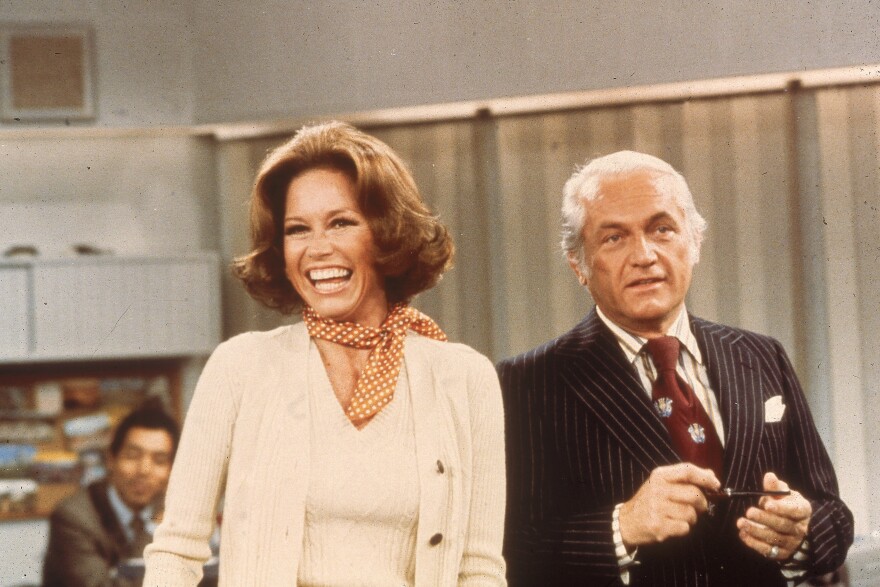
Let’s take a nostalgic trip back to the 1970s and dive into how The Mary Tyler Moore Show changed the landscape of television and highlighted the currents of second-wave feminism. Whether you’re a longtime fan or new to the show, you’ll see how it brilliantly balanced traditional femininity with the emerging image of the career woman.
Before the ’70s, TV networks had a tight grip on producers, controlling what got aired and how profits were shared. But then came the Financial Interest and Syndication Rules (fin-syn rules), a game-changer that banned networks from owning or profiting from the syndication of shows not originally aired on their network. This shift was all about breaking up the monopoly of the big networks and giving independent producers a chance to shine.
MTM Enterprises, the company behind The Mary Tyler Moore Show, seized this opportunity. These rules allowed them to have more creative control, resulting in some fantastic spin-offs and a lot more freedom in their storytelling.
The Prime Time Access Rule (PTAR) was another big shift. It took prime-time slots away from networks and handed them to local stations. The goal? Boost local news and public affairs programming while cutting down on network dominance. MTM Enterprises thrived, selling shows directly to local stations and opening up more competition.
And then there was the advertising change. The Fairness Doctrine applied to cigarette ads, redirecting advertising dollars towards products targeting women, like home, fashion, and lifestyle goods. Networks needed to attract female viewers, and The Mary Tyler Moore Show, with its relatable female lead, fit the bill perfectly. The result? Seven successful seasons of groundbreaking TV.
Meet Mary Richards: The New Woman on TV
Mary Richards was the epitome of the “new woman” in the 1970s. Living independently in Minneapolis, she struck a balance between second-wave feminist ideals and traditional femininity, making her a hit with a broad audience.
One thing that made Mary so relatable was her interest in fashion. Her closet, filled with the latest styles, symbolized her inner thoughts and struggles. Remember that episode where she unbuttoned her shirt right before her ex showed up? It was a small moment that showed her vulnerability and adherence to traditional norms, making her the girl next door everyone loved.
Despite her career success, Mary felt the societal pressure to marry, a sentiment many women related to at the time. This desire kept her grounded in traditional roles, even as she navigated her professional life.
Mary’s career at WJM-TV was revolutionary. She applied for a secretary position but ended up as an associate producer – a huge deal for women back then. Her job interview, filled with inappropriate questions, was played for laughs but subtly highlighted the gender discrimination women faced.
Despite these hurdles, the workplace often felt like a family. One memorable episode even had a group hug with Mary and her colleagues, showing a supportive environment. This portrayal subtly addressed sexism without turning off viewers who weren’t looking for overt political commentary. Mary’s role as an associate producer, rather than a traditional “female” job like teaching or nursing, was groundbreaking and resonated with many.
Fast forward to today, and we have shows like Fleabag, offering a new take on femininity. Fleabag’s protagonist, an unnamed antiheroine, deals with complex emotions and grief, often breaking the fourth wall to connect with the audience. This direct address creates an intimate yet uncomfortable bond, showcasing the multifaceted nature of modern womanhood. Unlike The Mary Tyler Moore Show, Fleabag embraces the flaws and complexities of its female lead, reflecting a broader acceptance of diverse female experiences on screen.
The Mary Tyler Moore Show was a trailblazer, blending traditional femininity with second-wave feminist ideals and capturing a wide audience. Its legacy paved the way for more nuanced portrayals of women in television, leading to contemporary shows like Fleabag that embrace the full spectrum of female complexity.
So, whether you’re rewatching Mary’s adventures or diving into Fleabag’s world, it’s clear that the influence of The Mary Tyler Moore Show is still felt in the rich, diverse representations of women on TV today.

Leave a comment